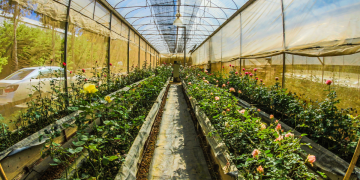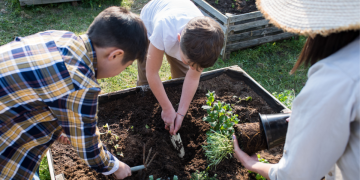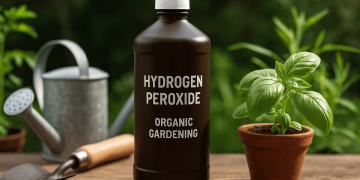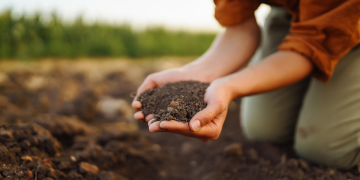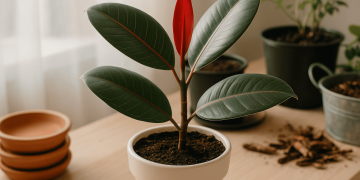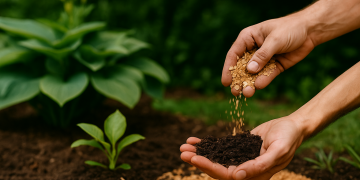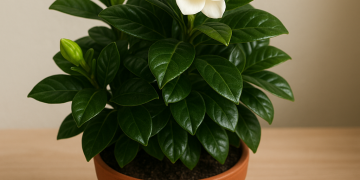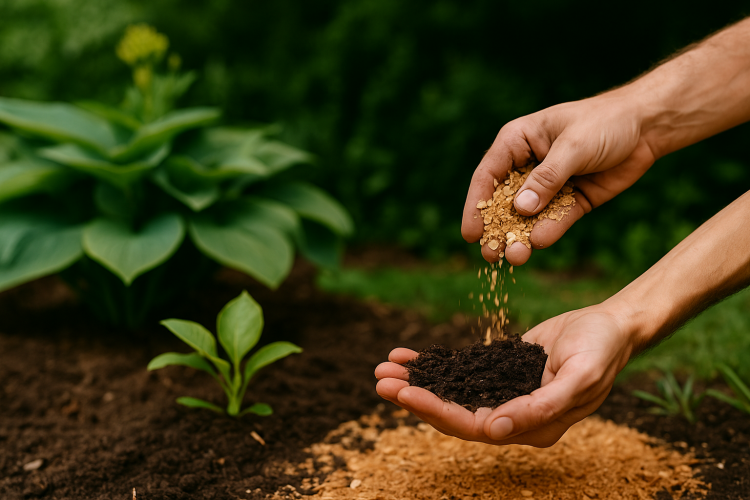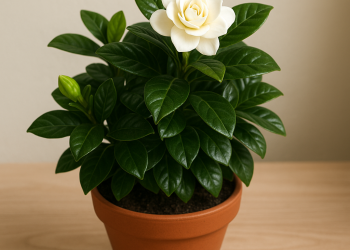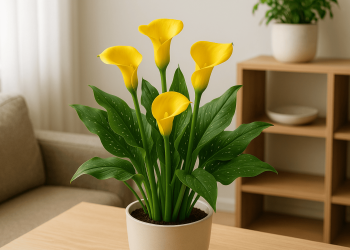Table of Contents
ToggleWhy Your Soil Dries Out Quickly and How to Test Soil Water Retention at Home
If you’ve noticed your soil drying out faster than expected, the root cause often lies in its water retention capacity. But what is water retention in soil exactly? Simply put, it’s the soil’s ability to hold onto moisture in the tiny spaces, or pores, within it after watering. This natural characteristic plays a crucial role in how long your plants can access the water they need before you need to water them again.
Understanding this concept helps gardeners and plant lovers anticipate their watering schedule more effectively and figure out practical ways to improve their soil’s moisture-holding ability. The faster your soil loses water, the more frequently you’ll need to water—but there’s a straightforward way to gauge this right at home.
One of the simplest and most immediate methods to check moisture levels is the touch test. By gently pushing your finger a couple of inches into the soil, you can feel whether it’s dry, damp, or moist. If the soil feels dry below the surface, it’s a clear sign that your plants are thirsty and it’s time to water. This hands-on technique is accessible to everyone and doesn’t require any tools, making it the first step in assessing soil moisture.
For those who want more precise readings, affordable moisture sensors can be a valuable addition. These devices give quick and reliable feedback on how wet your soil really is. Using such sensors not only saves time but also helps prevent overwatering or underwatering, both of which can harm your plants. Investing in a basic sensor could prove worthwhile, especially if you’re managing a larger garden or sensitive tropical plants where consistent moisture is key.
While the type of soil you have—whether sandy, clayey, or loamy—directly influences what type of pot helps retain moisture and how well your soil holds water, diving deep into soil composition and detailed diagnostics can be complex.
Related Article
If you're struggling with soil that stays too wet or drains poorly, don't miss our practical guide:
👉 How to Dry Out Soil in Indoor Plants: Fast Solutions for Soggy Soil and Overwatering

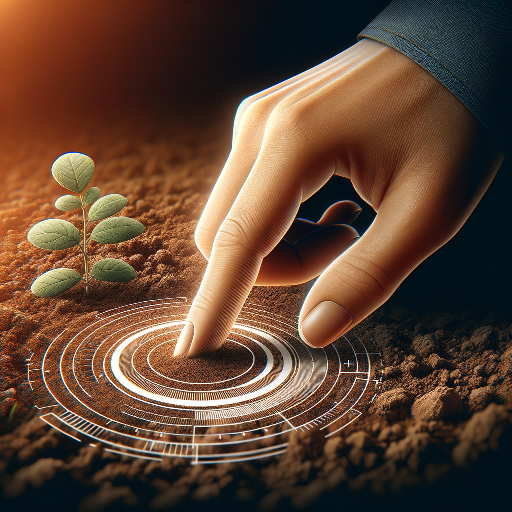
💡 Tip
Using moisture sensors can help you avoid excessive watering and keep your plants healthier for longer.
Best Materials and Amendments to Dramatically Improve Water Retention in Soil
Improving water retention in soil is key to maintaining healthy plants and reducing watering frequency, especially for home gardens and container plants. To effectively improve water retention in soil, adding the right materials can make a noticeable difference. Below, we explore some of the best amendments available, explaining what each is, how it works, and the scenarios where it’s most useful.
Vermiculite is a lightweight mineral that acts almost like a sponge, absorbing and slowly releasing moisture. It’s especially valuable for sandy soils or small pots where water tends to drain too quickly. Its fine, flaky texture increases water-holding capacity while promoting aeration, which means roots get moisture without suffocating. Vermiculite is easy to mix into potting soil or garden beds and is perfect when you notice the soil drying out rapidly.
Coconut coir, or fiber of coconut, is a sustainable and clean alternative that adds bulk and moisture retention without becoming soggy. This natural material holds water efficiently, improving soil structure, and also enhances air flow—critical for healthy root systems. Coconut coir is ideal for a wide range of plants, especially when you want an eco-friendly option that breaks down slowly over time.
Peat moss (peat moss) behaves like a natural sponge, absorbing a large amount of water and slowly releasing it to plants. It’s particularly effective for soils prone to compaction, as it loosens dense soil making water penetration easier. However, given its environmental impact due to harvesting practices, it’s best used moderately and in combination with other amendments. Peat moss excels when you observe the soil hardening or water pooling on the surface.
On the opposite end, perlite does not retain much water but plays a crucial role in improving drainage and preventing soil from becoming compacted or waterlogged. When mixed with moisture-retaining materials, it balances moisture levels by ensuring excess water drains away, avoiding root rot. Perlite is best when your soil tends to stay too wet or lacks aeration, often used alongside vermiculite or organic matter.
Speaking of organic matter, compost is arguably one of the most beneficial soil amendments. It enriches the soil with nutrients while significantly enhancing its ability to hold moisture. Adding compost improves soil texture, boosts microbial life, and increases water retention consistently over time. Compost is suitable for almost any soil type and should be part of an ongoing soil improvement routine.
To further boost moisture retention, the use of mulch as a surface cover is essential. Mulch creates a barrier that greatly reduces evaporation and shields the soil from direct sun exposure. This locks in the moisture benefits gained from the internal amendments and results in less frequent irrigation. Whether organic (like wood chips or straw) or inorganic, mulch complements the effects of materials like compost and peat moss, especially during hot seasons.

| Material | Primary Function | Key Advantages | Recommended Use |
|---|---|---|---|
| Vermiculite | Water absorption and slow release | Lightweight, improves aeration | Sandy soils, small pots, rapid-drying soil |
| Coconut Coir | Water retention and structure | Sustainable, improves air flow | Versatile use, eco-friendly gardening |
| Peat Moss | High water absorption | Natural sponge, loosens compacted soil | Compacting soils, moderate use due to sourcing |
| Perlite | Drainage and aeration | Prevents compaction, balances moisture | Wet soils, mixed with moisture retainers |
| Compost | Nutrient enrichment + moisture | Enhances texture, boosts microbes | Almost any soil, ongoing soil improvement |
| Mulch | Surface evaporation barrier | Reduces water loss, protects soil | All garden types, especially during hot seasons |
When deciding which material to use, pay attention to your soil’s behavior: does it dry too quickly upon touch? Does it compact heavily? Do your plants show signs of water stress? These signals guide whether you need more water retention or improved drainage. For indoor or tropical plants, consulting specific substrate blends can help you tailor the soil mix perfectly.
💡 Tip
Combine moisture-retaining amendments like vermiculite or coconut coir with mulch and compost to create a balanced soil that holds water but drains well—your plants will thank you!
Proven Watering Techniques and Mulching Strategies to Keep Soil Moist for Longer
Once your soil is improved and better equipped to hold moisture, adjusting your watering techniques and using mulch effectively can make a significant difference between soil that dries out within minutes and soil that stays moist for several days. The key is to adopt deep and infrequent watering, which means applying enough water to saturate the soil deeply, then allowing it to partially dry before watering again. This encourages roots to grow deeper, tapping into the water stored below the surface and enhancing the plant’s overall resilience. Proper watering rhythms are essential for maximizing moisture retention and supporting healthy root development.
Covering the soil surface with organic mulch is another highly effective strategy. Applying materials like dry leaves, shredded bark, or composted mulch acts as a protective barrier that limits evaporation by shading the soil from direct sunlight and wind. This practice helps maintain cooler soil temperatures and reduces moisture loss significantly. Additionally, keeping soil covered with mulch also suppresses weed growth, which otherwise competes with your plants for precious water.
Minimizing soil disturbance by tilling less frequently is equally important to retain moisture. Excessive tilling breaks down soil structure and exposes the moisture-rich layers to air, speeding up evaporation. By reducing tillage, you preserve the natural soil aggregation that supports moisture retention and encourages beneficial microbial life. This practice complements watering and mulching, creating an environment where soil moisture lasts longer naturally.
When it comes to containers, choosing the right pot can also influence how well the soil retains moisture. Clay or glazed ceramic pots are preferable because their porous nature allows slow evaporation while keeping the substrate moist for longer periods. In contrast, plastic pots tend to cause the soil to dry out faster due to poor breathability, which can stress tropical plants that demand consistent moisture. Selecting the appropriate pot is a subtle yet effective way to improve water retention in potted plants.
For those looking to level up their watering routine, installing domestic drip irrigation systems offers precision and efficiency. These systems deliver water directly to the roots in controlled amounts, reducing waste and ensuring plants receive moisture exactly where it’s needed. They’re easy to set up even in small gardens or urban spaces, making them a smart investment for consistent moisture management.
⚠️ Warning
Avoid shallow, frequent watering, as this promotes weak root systems and causes the surface soil to dry out quickly, undermining moisture retention efforts.
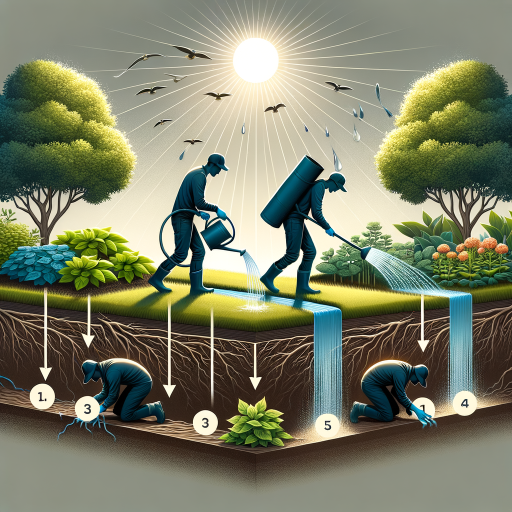
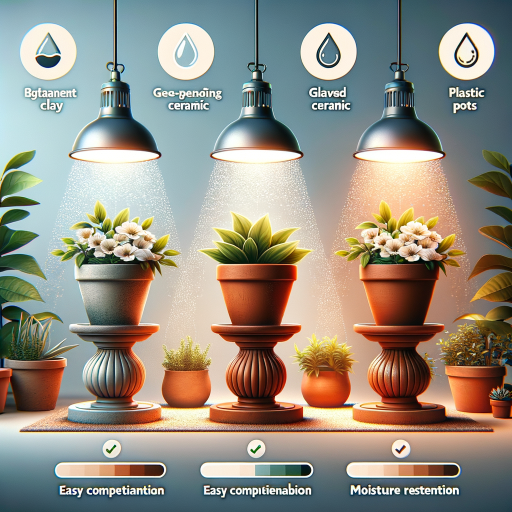
By combining watering techniques for moisture retention like deep, infrequent irrigation with the benefits of mulch for moisture and reducing tillage, you create a practical and sustainable routine that keeps soil moist longer, supporting the health of your plants and optimizing your gardening efforts.
Quick Action Checklist: Steps to Boost Soil Moisture and Buy the Right Tools
To start, assess your soil moisture levels using simple testing methods. Understanding what is water retention in soil and how to test soil moisture are crucial first steps. You can check manually by feeling the soil a few inches below the surface or use a moisture meter for a more precise reading. This initial evaluation guides the next actions to improve your soil’s water-holding capacity effectively.
Next, enrich the soil with organic matter and amendments that help retain moisture. Adding compost, peat moss, or coconut coir improves texture and nutrient content, perfectly fitting how to improve soil for tropical plants or any moisture-sensitive greenery. These materials boost the soil’s ability to hold water longer, reducing unnecessary watering frequency and stress on your plants.
Moving forward, apply watering techniques designed to maximize moisture retention. Instead of frequent shallow watering, opt for deep watering sessions that encourage roots to grow deeper and utilize water more efficiently—this aligns with best practices on watering techniques for moisture retention. Consider drip irrigation or soaker hoses to deliver water slowly and consistently.
Once watering is optimized, use mulch as a protective layer on your soil surface. Mulch offers multiple benefits, including shading the soil and minimizing evaporation, which underscores the benefits of mulch for moisture. Organic mulches like bark chips or straw gradually decompose, further enhancing soil structure and moisture content.
Another essential consideration is choosing the right type of pot to help retain moisture if you’re container gardening. Opt for pots made of materials that reduce rapid drying such as glazed ceramic or plastic rather than porous terracotta, directly addressing what type of pot helps retain moisture. Pairing the right pot with quality soil mix can significantly boost your success.
Finally, maintain a routine of observation and adjustment to respond to seasonal effects on soil moisture. Remember that temperature changes, rainfall patterns, and sunlight intensity can alter moisture needs—knowing the seasonal effects on soil moisture keeps your care precise and plants thriving over time.
Taking these steps will help you confidently transform your soil to retain more water, optimizing growth and sustainability.
The path to healthier soil is clear—start today and watch your plants flourish with improved moisture retention!

